Japan’s Beloved Noodle Dish
Ramen isn’t just a meal; it’s a cultural icon in Japan. This beloved noodle soup has transcended its humble beginnings to become a culinary symbol of Japan. Every bowl tells a story of regional flavors and culinary innovation. For many Japanese, ramen is a comfort food, a late-night indulgence, and a subject of passionate debate and appreciation.
Tokyo: The Epicenter of Ramen Diversity
Tokyo, a bustling metropolis, is also a battleground for ramen supremacy. Here, you can find every type of ramen imaginable. From tiny, tucked-away shops in narrow alleys to acclaimed, Michelin-starred establishments, Tokyo offers a ramen experience like no other city. Each neighborhood boasts its unique ramen flair, making the city a paradise for noodle enthusiasts.
Exploring Ramen Varieties: Shoyu, Miso, Shio, Tonkotsu, and Tsukemen
Let’s dive into the world of ramen varieties:
Shoyu (Soy Sauce) Ramen(しょうゆラーメン): This is the classic, with a clear, brown broth, typically chicken-based, flavored with soy sauce. It’s a staple in Tokyo and is beloved for its balance and simplicity.
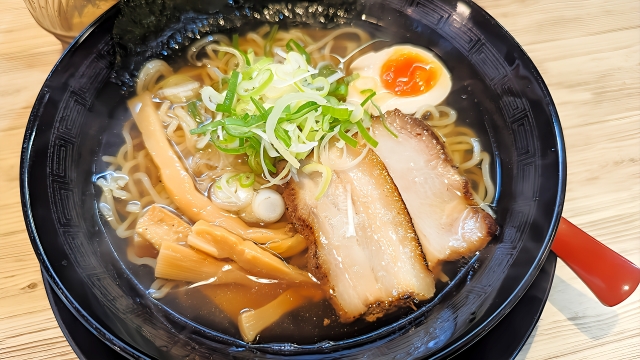
Miso Ramen:(みそラーメン) Hailing from Hokkaido, miso ramen features a rich, hearty broth seasoned with miso paste. It’s perfect for those who enjoy a deeper, more robust flavor.
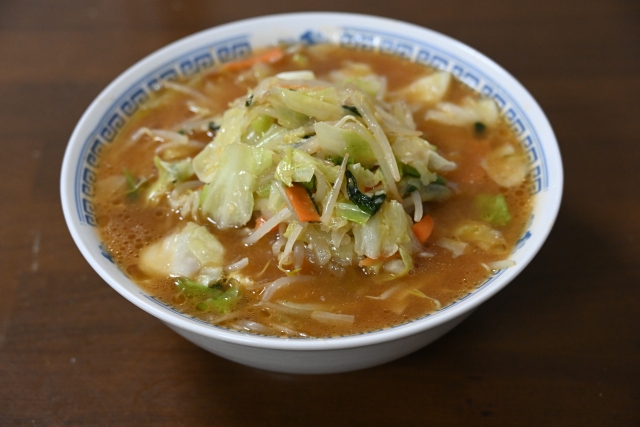
Shio (Salt) Ramen(しおラーメン): The most delicate of them all, shio ramen has a light, clear broth seasoned primarily with salt. It often features seafood or chicken and is perfect for tasting the natural flavors of the broth.
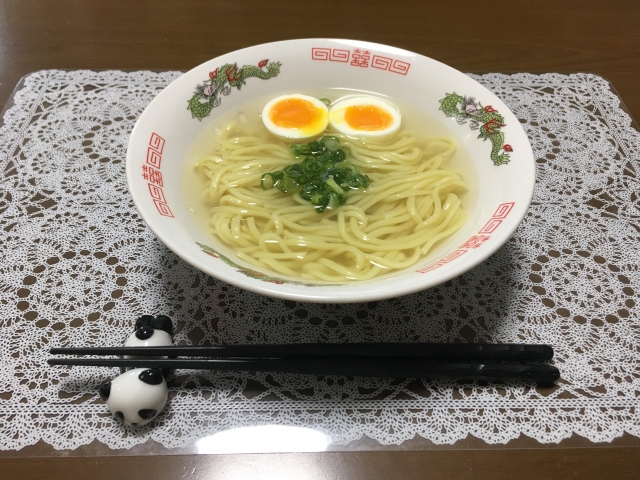
Tonkotsu (Pork Bone) Ramen(とんこつラーメン): Originating from Kyushu, this ramen has a creamy, rich broth made by boiling pork bones for hours. It’s a favorite for those who crave a heartier, meatier flavor.
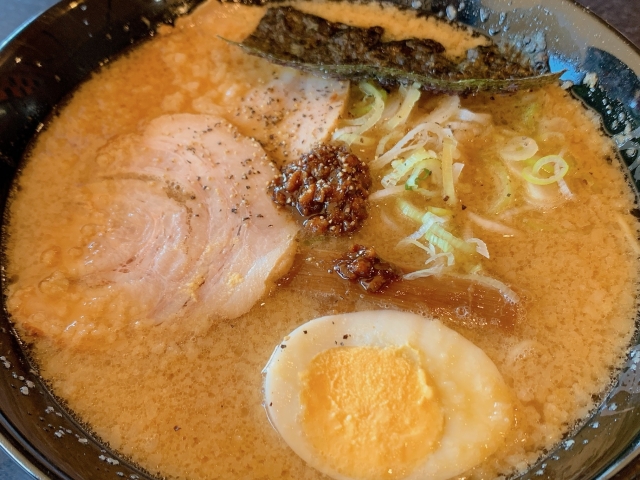
Tsukemen (Dipping Noodles)(つけめん): A different take on ramen, where the noodles are served cold and separate from a bowl of hot, flavorful broth for dipping.In some restaurants, if you request ‘please warm the noodles’, (あつもり)they will heat them for you. Additionally, there is often a soup provided to add to any leftover dipping sauce, allowing you to enjoy it as a soup at the end of your meal.
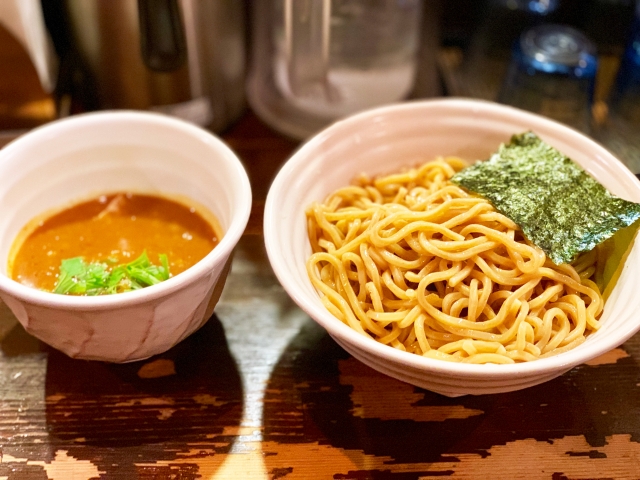
Ramen Toppings: A World of Flavor in Every Bowl
No ramen is complete without its toppings. Common toppings include:
- Chashu: Succulent slices of braised pork belly.
- Nori: Dried seaweed, adding a touch of the ocean.
- Menma: Fermented bamboo shoots, offering a nice crunch.
- Ajitsuke Tamago: A soft-boiled egg marinated in soy sauce and mirin, adding a creamy richness.
- Green Onions: For a fresh, sharp bite.
- Kamaboko,Naruto: Fish cake, recognizable by its pink swirl.
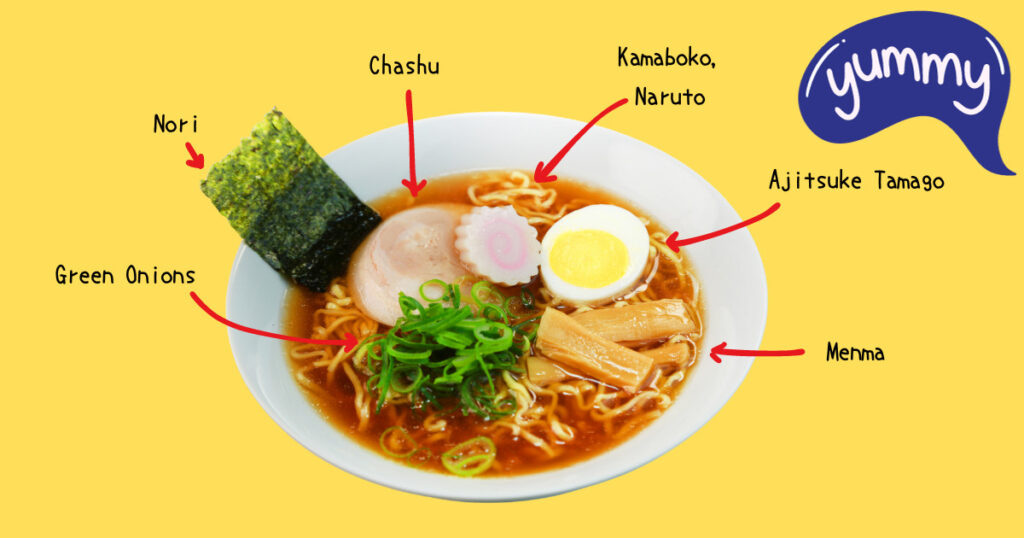
Each topping adds depth and complexity, making every ramen bowl a unique culinary experience.
Famous Ramen Chains and Local Favorites in Tokyo
Tokyo is not just about independent ramen shops; it’s also home to several renowned ramen chains that have garnered a following both domestically and internationally:
Ichiran(一蘭)
Famous for its tonkotsu ramen, Ichiran offers a unique dining experience where you enjoy your ramen in individual booths, focusing solely on the flavor of the broth and noodles.
Ippudo(一風堂)
Another champion of tonkotsu ramen, Ippudo is known for its rich, flavorful broth and perfectly chewy noodles. It’s a must-visit for ramen aficionados.
Japanese Soba Noodles TSUTA(蔦)
A Michelin-starred ramen restaurant, Tsuta stands out for its sophisticated soy-based broth and truffle-infused oil, offering a gourmet twist to the traditional ramen.
Afuri(阿夫利)
Known for its yuzu shio ramen, Afuri brings a refreshing citrus twist to the classic ramen, making it a standout choice for those who prefer lighter broths.The soup is carefully prepared using select ingredients such as domestic whole chicken, seafood, and aromatic vegetables, simmered slowly in pure water. There is also a vegan ramen available.
Don’t miss out on local favorites like Fuunji in Shinjuku, famous for its tsukemen, and Ramen Jiro for a hearty, almost rebellious take on ramen with its massive portions and unique style.
The Culture of Queuing at Ramen Shops in Japan
In Japan, queuing for ramen is more than a necessity; it’s part of the cultural experience. This phenomenon has several underlying reasons:
Pursuit of Excellence: Japanese culture highly values perfection and excellence. Many ramen chefs spend years perfecting their broth, noodles, and toppings. Ramen enthusiasts are willing to queue for these meticulously crafted bowls.
Popularity of Small Shops: Many top-rated ramen shops in Japan are small, sometimes with fewer than ten seats. This limited space, coupled with high demand, naturally leads to queues.
Word of Mouth and Social Influence: Ramen shops often gain fame through word of mouth. When a shop gets highlighted in media or by famous food critics, it draws larger crowds, leading to longer queues.
Ramen as a Gourmet Experience: For many Japanese, eating ramen is not just a quick meal but a gourmet experience. Waiting in line is part of the anticipation and enjoyment of what is considered an affordable luxury.
Advice for Foreign Visitors Surprised by the Queuing
For foreigners visiting Japan, the sight of long lines at ramen shops can be surprising. Here’s some advice:
Embrace the Experience: Understand that queuing is part of the authentic ramen experience in Japan. It’s not just about the food; it’s about the anticipation and the satisfaction of finally enjoying a bowl of ramen that people are willing to wait for.
Plan Accordingly: If you’re keen on trying a popular ramen shop, plan your visit. Avoid peak hours or visit on weekdays to encounter shorter lines.
Utilize Waiting Time: Use the waiting time to interact with locals or other tourists in line. It’s an excellent opportunity to learn more about the local food culture and get recommendations.
Explore Lesser-Known Shops: While famous shops are worth the wait, exploring lesser-known ramen shops can also lead to delightful discoveries without the long queues.
Respect the Queue Etiquette: In Japan, respecting the queue is paramount. Be patient and maintain the order of the line.
Remember, queuing for ramen in Japan is a testament to the quality and love that goes into each bowl. It’s a unique aspect of Japanese culinary culture that, when embraced, adds depth to your travel experience.
Embarking on Your Tokyo Ramen Adventure
As you set out on your Tokyo ramen adventure, remember that each bowl is a reflection of years of tradition and culinary craftsmanship.
Whether it’s a quick bowl at a chain or a leisurely meal at a local hideout, Tokyo’s ramen will not disappoint. Embrace the diversity, from the rich tonkotsu to the delicate shio, and find your personal favorite. And remember, in the world of ramen, every slurp counts!



